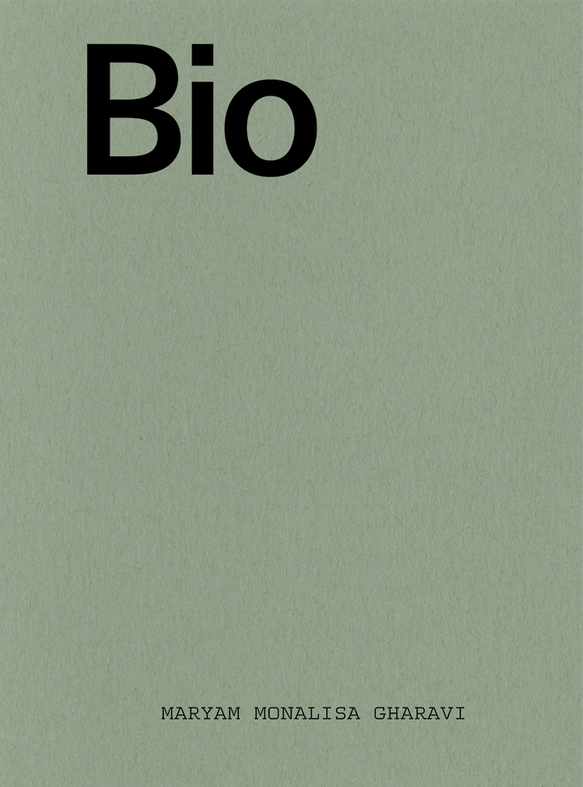Bio is a text written / deleted / rewritten on Twitter dot com for one year. That accumulation / deletion / recomposition is now a 736-page book that contains zero tweets. It will be released in May 2018 by Inventory Press. There's no dedication page, but it's informally dedicated to the internet. And to Palestine, where most of it was written.
"How do you use a medium against and within its own confines?"
That was the last question I posed out loud to myself about Bio when discussing its motivations, propositions, and process.
Since then excerpts of the project have appeared in The Animated Reader: Poetry of Surround Audience, an anthology of the 2015 New Museum Triennial (edited by Brian Droitcour). I've also had a chance to discuss it in various contexts, most recently in late 2017 at a closed study workshop at Stuart Hall Library in London. Curator Annie Jael Kwan invited me, Sutapa Biswas, Tara Fatehi Irani, Kimvi Nguyen, and Erika Tan to discuss how artists, particularly diasporic women of color, use archives and performance.
Here is a transcript of some of my extemporaneous comments, lightly edited for concision.
"[MMG]: Bio is premised as an internetal performance, and it’s coming out as a text, and I want to talk about the specificity of that word for the project.
"The premise of the archive is that it accumulates, and accretes, and is abundant, and is something I’ve found quite unnerving, and particularly people have talked about artistic biography. But one of the un-satisfying thing about digital architecture and social media, is the way you cannot actually erase yourself. If I were to delete my Twitter history, there’s always a storage centre in Arizona or Taiwan, or somewhere, that has thumbnails and copies, and facsimiles of that tweet in a way that I think, is not only not innocuous politically, but more to the point, quite limiting. I’m really attracted to, historical examples, like Japanese classical artists, who would burn their archives, as artists. Rather than accumulate, they were interested in affluence, but not abundance. And I think there’s a difference between affluence from flow, rather than abundance that’s this thing that accumulates. Accumulating deadens you.
"I found that idea very difficult to activate, and started to look at a link I sent you, which was a self-made image repository of cancelled texts. So artist texts in which something is written and then crossed out—Man Ray, Sandra Hoffman, Anna Maria Maiolino—there are dozens of examples. And I was really interested about thinking about how would an artist in the 21st century approach this, particularly with the space of digital architecture. Or if you like, the virtual realm. And I decided to find a way to do this on Twitter. I was looking for a way to do this on a scroll, and maybe I’ll come to the critical works I was reading at the time.
"Twitter in particular, was interesting, because even though the 140-character Tweets are stored, they are never really deleted. The bio line is not. In other words, there is no algorithm that retains that in any kind of facsimile. For a year [and I was mostly living in Ramallah at the time, without the benefit of reliable wifi], I would update that line—that 160-character line. I was doing so in the context mentioned, the historical lineage I see. And it was in the position of doing something that I’ve long avoided, including avoiding having an artist website, for exactly the same misgivings of archiving yourself, but I kept a material document with these accretions that then got deleted everyday, and then were renewed.
"And then they became this arrangements and compositions in the postscript, with the date rather than a page number. I remember looking at On Kawara’s Western Union Telegrams, in which that was also the case. I think Kawara was really ahead of his time, for using the date of his postcard as a kind of anchoring object/text/material.
"I mentioned a critical text I was reading and I didn’t distribute it to you guys, because it’s literally a blog post. There’s a living theorist, originally Italian, now living in New Zealand, named Giovanni Tiso, and we happen to be Twitter friends. But Giovanni wrote an essay on his blog about problematizing the text and the ‘printernet’ in this current moment, and filling a vacuum of interesting ideas about it. Uninteresting ideas, for me, include things like Kenneth Goldsmith, for whom, just printing out pages of the internet is the printernet, I think that’s really lazy. Giovanni thinks about it as this—if there’s such a thing as a scroll, so a Facebook scroll, Twitter, Tumblr, etc.—open text. It’s when the artist ends the work, or dies, or the profile is hacked, whatever, that it then becomes a text. So Bio, without being published, without being a 736-page book, etc., was already after the end of the project at 365 days, in that premise, a text. And I found that idea, profoundly more interesting, than thinking about well, 'it’s digital versus it’s paper.' I thought there’s a lot more to be generated from that distinction between open text, finitude, etc.
"And also my own misgivings, as I mentioned that we can only accrue, we can only accumulate, we can never really die, or delete.
"[KN]: So social media, when you die, it’s like a graveyard, your account still exists. That is really weird.
"[MMG]: Yeah, and I think then that’s a memorial, and that’s a whole other clusterfuck."
